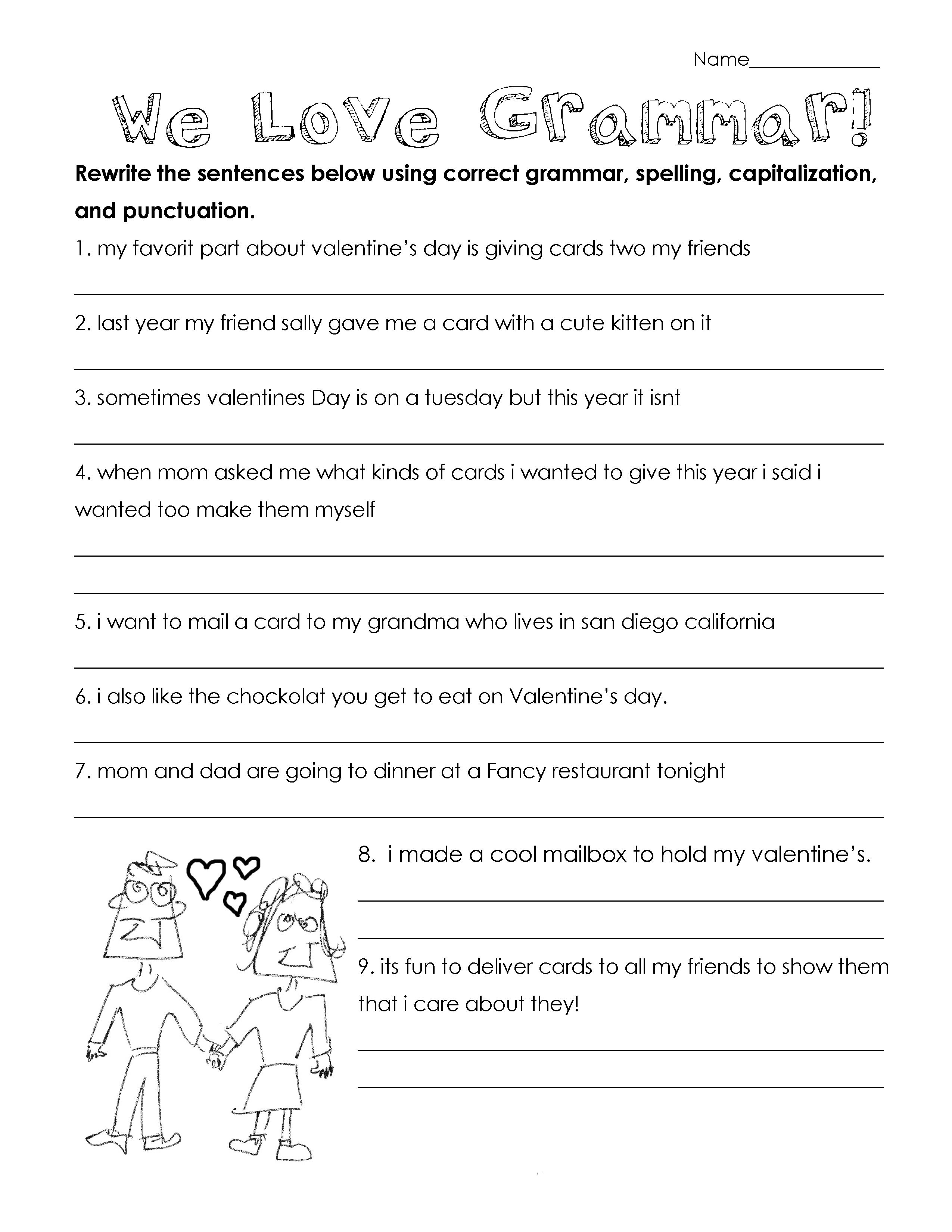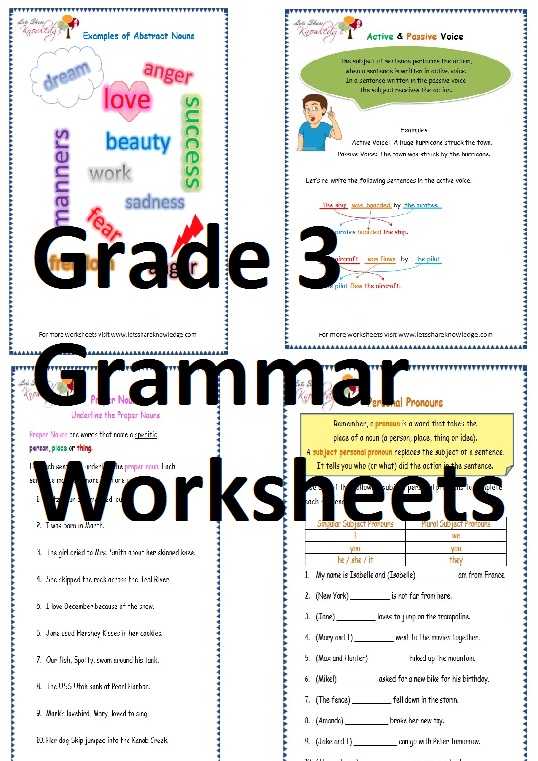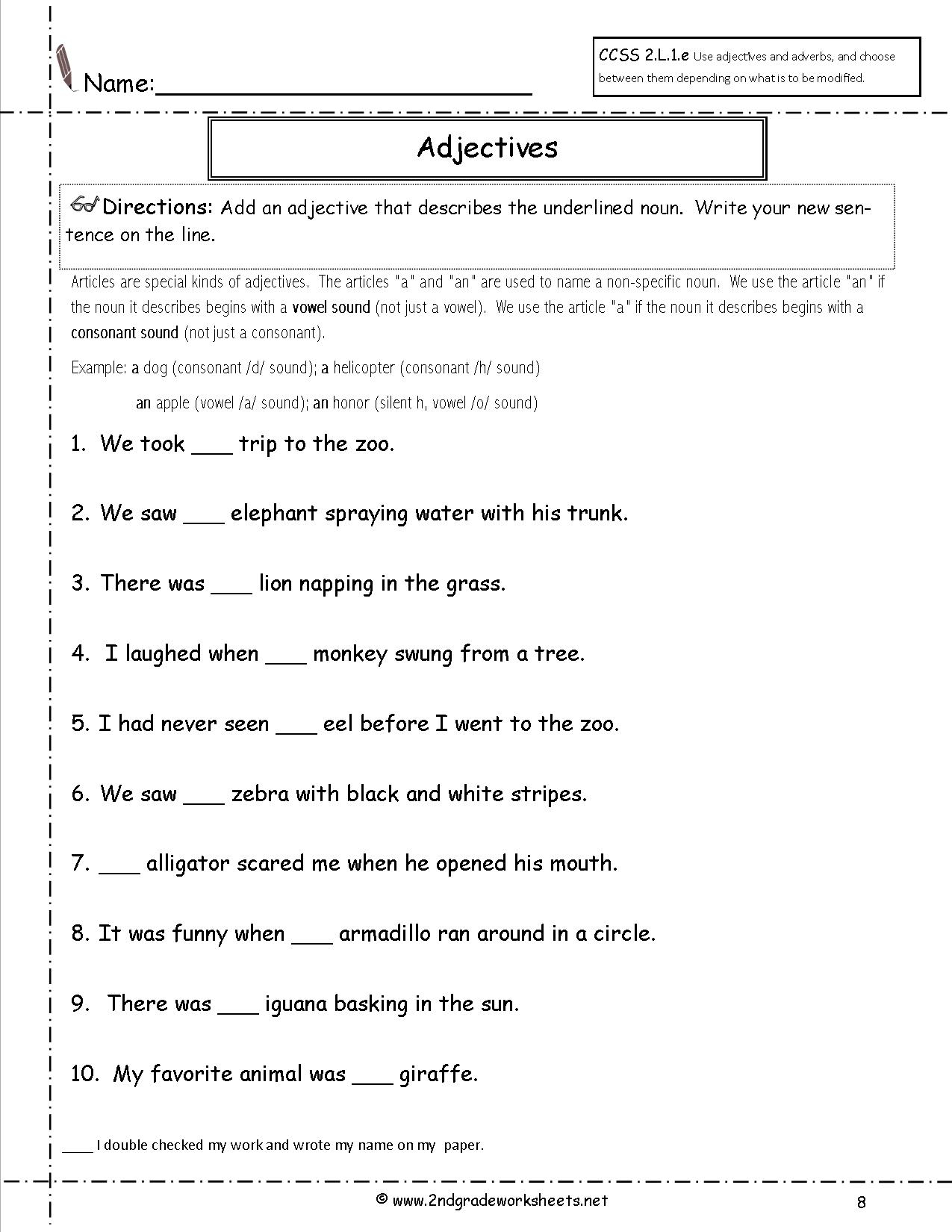
Mastering the Building Blocks: The Power of 3rd Grade Grammar Worksheets
The third grade marks a pivotal stage in a child’s educational journey. As students transition from foundational literacy to more complex reading comprehension and written expression, a solid grasp of grammar becomes not just beneficial, but absolutely essential. It’s during this year that children are expected to solidify their understanding of sentence structure, parts of speech, punctuation, and capitalization, laying the groundwork for all future academic success. In this crucial developmental phase, 3rd grade grammar worksheets emerge as an invaluable tool, offering structured practice, reinforcement, and a clear path to mastery.
This comprehensive article will delve into the specific grammar concepts typically covered in the third grade, explore the myriad benefits of utilizing 3rd grade grammar worksheets, and provide insights into how educators and parents can effectively integrate these resources to foster strong grammatical proficiency in young learners.
The Grammar Landscape of 3rd Grade: What’s Being Taught?

Before diving into the utility of worksheets, it’s important to understand the specific grammatical skills third graders are expected to acquire. The curriculum often builds upon knowledge from earlier grades, deepening understanding and introducing more nuanced concepts. Here’s a breakdown of typical third-grade grammar topics:

-

Parts of Speech Deep Dive:

- Nouns: While introduced earlier, third grade often focuses on distinguishing between common and proper nouns, forming regular and irregular plural nouns (e.g., child to children, mouse to mice), and understanding possessive nouns (e.g., dog’s bone, children’s toys). Worksheets might involve sorting nouns, correcting capitalization of proper nouns, or rewriting sentences to show possession.
- Verbs: Students move beyond simply identifying action verbs to understanding linking verbs (e.g., is, are, was, were) and helping verbs (e.g., has, have, had). They also delve into verb tenses: simple past, present, and future. Worksheets can provide practice in identifying verb types, conjugating verbs, and ensuring subject-verb agreement (e.g., He runs vs. They run).
- Adjectives: Third graders learn that adjectives describe nouns and pronouns. They practice identifying adjectives, using descriptive adjectives, and understanding comparative and superlative forms (e.g., big, bigger, biggest). Worksheets might ask students to circle adjectives, fill in blanks with appropriate adjectives, or rewrite sentences with more descriptive language.
- Adverbs: Introducing adverbs, which describe verbs, adjectives, or other adverbs, is a key step. Students learn about adverbs of manner (how), time (when), and place (where). Worksheets often involve identifying adverbs, forming adverbs from adjectives (e.g., quick to quickly), and using adverbs to add detail to sentences.
- Pronouns: While personal pronouns (I, you, he, she, it, we, they) are familiar, third grade introduces objective pronouns (me, you, him, her, it, us, them) and possessive pronouns (mine, yours, his, hers, ours, theirs). Worksheets can focus on correct pronoun usage, avoiding pronoun-antecedent agreement errors, and identifying the noun a pronoun replaces.
- Prepositions and Conjunctions: Basic understanding of prepositions (e.g., in, on, under, with) and coordinating conjunctions (FANBOYS: for, and, nor, but, or, yet, so) begins to form. Worksheets might involve identifying prepositions in phrases or using conjunctions to combine simple sentences.


-
Sentence Structure:

- Subjects and Predicates: Students solidify their ability to identify the complete subject (who or what the sentence is about) and the complete predicate (what the subject does or is). Worksheets can have students underline these parts, or match subjects to predicates.
- Types of Sentences: Reviewing declarative, interrogative, imperative, and exclamatory sentences, and using appropriate end punctuation for each.
- Simple and Compound Sentences: A major leap is understanding how to combine two simple sentences into a compound sentence using a coordinating conjunction and a comma. Worksheets provide valuable practice in this sentence-combining skill.
- Fragments and Run-ons: Identifying and correcting incomplete thoughts (fragments) and sentences that run together without proper punctuation or conjunctions.
-
Punctuation and Capitalization:
- Capitalization: Reinforcing capitalization of proper nouns, beginnings of sentences, and titles.
- Commas: Expanding comma usage to include commas in a series (e.g., apples, bananas, and oranges), commas after introductory words or phrases, and commas before conjunctions in compound sentences.
- Apostrophes: Mastering apostrophes for contractions (e.g., don’t, isn’t) and for possessive nouns (e.g., teacher’s desk).
- Quotation Marks: Introduction to using quotation marks to indicate dialogue.
-
Usage and Mechanics:
- Homophones: Distinguishing between commonly confused words that sound alike but have different spellings and meanings (e.g., to, too, two; their, there, they’re).
- Irregular Verbs: Practice with common irregular past tense verbs (e.g., go/went, eat/ate, see/saw).


Why 3rd Grade Grammar Worksheets Are Indispensable
Given the breadth and depth of grammar concepts introduced in third grade, 3rd grade grammar worksheets become an invaluable tool for both teachers and parents. Their benefits are manifold:
-
Reinforcement and Practice: Grammar rules, like mathematical formulas, require repeated application to truly sink in. Worksheets provide the structured, repetitive practice necessary to internalize concepts. They allow students to apply what they’ve learned in a controlled environment, solidifying their understanding.
-
Independent Application: Worksheets empower students to work independently, applying rules without constant teacher prompting. This builds confidence and fosters a sense of self-reliance in their learning journey. It also allows teachers to circulate and provide individualized support to those who need it most.
-
Targeted Skill Development: A well-designed worksheet can focus on a single, specific grammar concept. For instance, one worksheet might exclusively deal with subject-verb agreement, while another targets the use of commas in a series. This allows for pinpointed instruction and practice, addressing specific learning gaps.
-
Assessment and Identification of Gaps: Worksheets serve as an informal assessment tool. By reviewing completed work, teachers can quickly identify areas where students are struggling collectively or individually. This data can then inform future lesson planning and intervention strategies.
-
Structured Learning Environment: For many third graders, the clear, predictable format of a worksheet provides a sense of security and structure. The instructions are usually straightforward, and the task is clearly defined, reducing anxiety and allowing them to focus on the grammatical concept at hand.
-
Differentiation Opportunities: Worksheets can be easily adapted to meet diverse learning needs. Teachers can select worksheets that are simpler or more challenging, or modify existing ones to provide scaffolding for struggling learners or enrichment for advanced students. For example, a worksheet on adverbs could have multiple-choice options for some students and open-ended sentence creation for others.
-
Bridge to Writing: While worksheets are discrete exercises, they directly contribute to improved writing skills. By practicing correct grammar, punctuation, and sentence structure in isolation, students are better equipped to apply these rules when constructing their own sentences, paragraphs, and essays. This is arguably the most significant long-term benefit.
Maximizing the Impact of Grammar Worksheets
Simply handing out worksheets isn’t enough. To truly harness the power of 3rd grade grammar worksheets, educators and parents should employ strategic approaches:
-
Integrate, Don’t Isolate: Grammar should never be taught in a vacuum. Connect worksheet activities to reading passages and writing assignments. Discuss how the grammar rules they’re practicing on a worksheet apply to the books they’re reading or the stories they’re writing. For example, after a worksheet on quotation marks, have them find examples in a chapter book or incorporate dialogue into their own narrative.
-
Vary the Format: While traditional fill-in-the-blank or multiple-choice worksheets are effective, also incorporate puzzles (crosswords, word searches with grammar terms), matching activities, sentence combining exercises, error identification and correction tasks, and creative writing prompts that require specific grammar application. Variety keeps engagement high.
-
Make it Engaging: Grammar can sometimes feel dry. Introduce worksheets with a mini-lesson, a short game, or a real-world example. Turn worksheet completion into a game by setting a timer or having students work in pairs. Celebrate success and effort.
-
Provide Timely and Constructive Feedback: Don’t just mark answers right or wrong. Review worksheets together, explaining why an answer is correct or incorrect. Use errors as teaching opportunities. Encourage students to articulate the rule they’re applying.
-
Encourage Self-Correction: Instead of immediately giving the right answer, prompt students to find their own mistakes. "Can you tell me why you chose ‘their’ here? What’s the rule for ‘there’?" This metacognitive process deepens understanding.
-
Use Worksheets as a Warm-up or Wrap-up: A short worksheet can be an excellent way to start a language arts lesson, reviewing previous concepts, or to end a lesson, solidifying new learning.
-
Connect to Communication: Continually emphasize that grammar isn’t just about rules; it’s about clear, effective communication. Discuss how proper grammar makes their writing easier to understand and how incorrect grammar can lead to confusion.
Finding Quality 3rd Grade Grammar Worksheets
The internet is a treasure trove of educational resources, and quality 3rd grade grammar worksheets are readily available. Look for:
- Educational Websites: Many reputable educational publishers, teacher resource sites (like Teachers Pay Teachers), and non-profit organizations offer free or subscription-based worksheets.
- Curriculum Aligned: Ensure the worksheets align with common core standards or your specific curriculum’s learning objectives for third grade.
- Clear Instructions and Examples: Good worksheets have unambiguous instructions and often include an example to guide students.
- Varied Difficulty Levels: Look for sets that offer a range of difficulty to cater to different student needs.
- Answer Keys: These are invaluable for quick grading and for students to self-check their work.
- Visually Appealing: While content is king, a clean, organized, and age-appropriate design can enhance engagement.
Beyond the Worksheet: A Holistic Approach
While 3rd grade grammar worksheets are a cornerstone of effective grammar instruction, they are part of a larger ecosystem. For true mastery, combine worksheets with:
- Extensive Reading: Exposure to well-written texts naturally familiarizes children with correct sentence structures and usage.
- Frequent Writing: Regular opportunities to write allow students to apply grammar rules in authentic contexts. Encourage creative writing, journaling, and informational reports.
- Interactive Games and Activities: Grammar games (online or traditional board games) can make learning fun and collaborative.
- Oral Language Practice: Encourage students to speak in complete sentences and use correct grammar in their verbal communication.
- Explicit Instruction: Teachers should provide clear, direct lessons on grammar rules before students tackle worksheets. Modeling correct usage is crucial.
Conclusion
The third grade is a critical juncture for developing robust grammatical skills. It’s a year where children move beyond basic recognition to applying rules, understanding sentence construction, and refining their written expression. In this dynamic learning environment, 3rd grade grammar worksheets are more than just exercises; they are foundational tools that provide the necessary practice, reinforce learning, and offer a clear pathway to grammatical proficiency.
By strategically integrating these worksheets with engaging activities, meaningful feedback, and a holistic approach to language arts, educators and parents can equip third graders with the grammatical precision they need to communicate effectively, succeed academically, and become confident, articulate individuals. The investment in solid grammar instruction at this stage will yield dividends for years to come.
